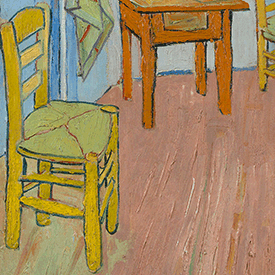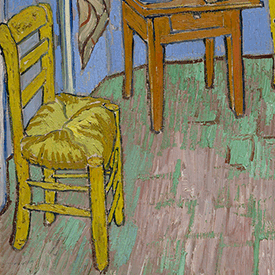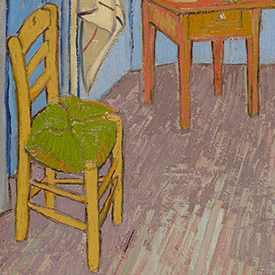This chair knew his secrets.
A chair is a chair is a chair, right? Well, not to Van Gogh. Shortly after painting his first Bedroom, the artist made two paintings just of chairs—one was his chair and the other was his housemate Paul Gauguin's. For Gauguin he had selected an elegant walnut chair, but for himself only a simple pine chair. These differences reflect Van Gogh's understanding of each artist's personality as well as his intentions of their roles within the Studio of the South—Gauguin was to be the leader, Van Gogh the student.
In the three Bedrooms, the different treatments of the chairs are not inconsequential. For each version, Van Gogh used at least two distinct shades of yellow for the frames of the chairs, and he painted outlines to reinforce their structures. The first version is painted in mostly flat tints except for the back of the chair, which the artist first painted with a light-green layer and contrasting bright-blue outlines.
In contrast, the second and third versions are depicted with more textural brushwork. Especially when you look at their seats, you can see the impasto, or thick application of paint, in contrasting colors—reflecting the more expressive style Van Gogh developed in Saint-Rémy.
Discover more illuminating differences among these objects:






© Art Institute of Chicago